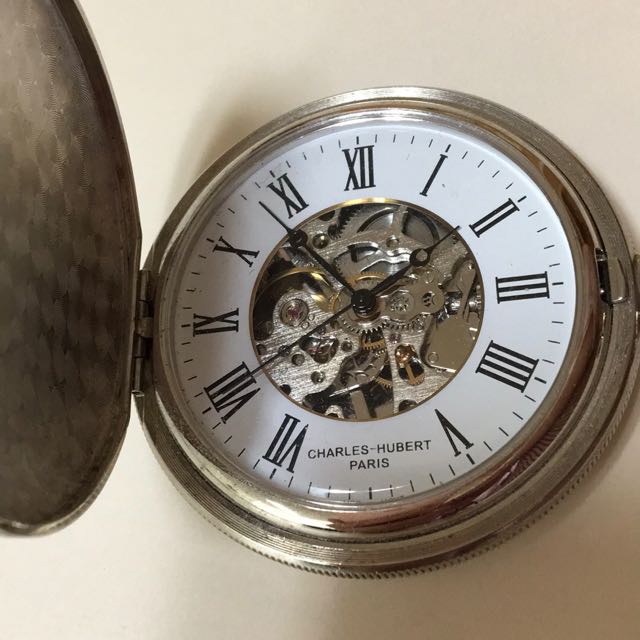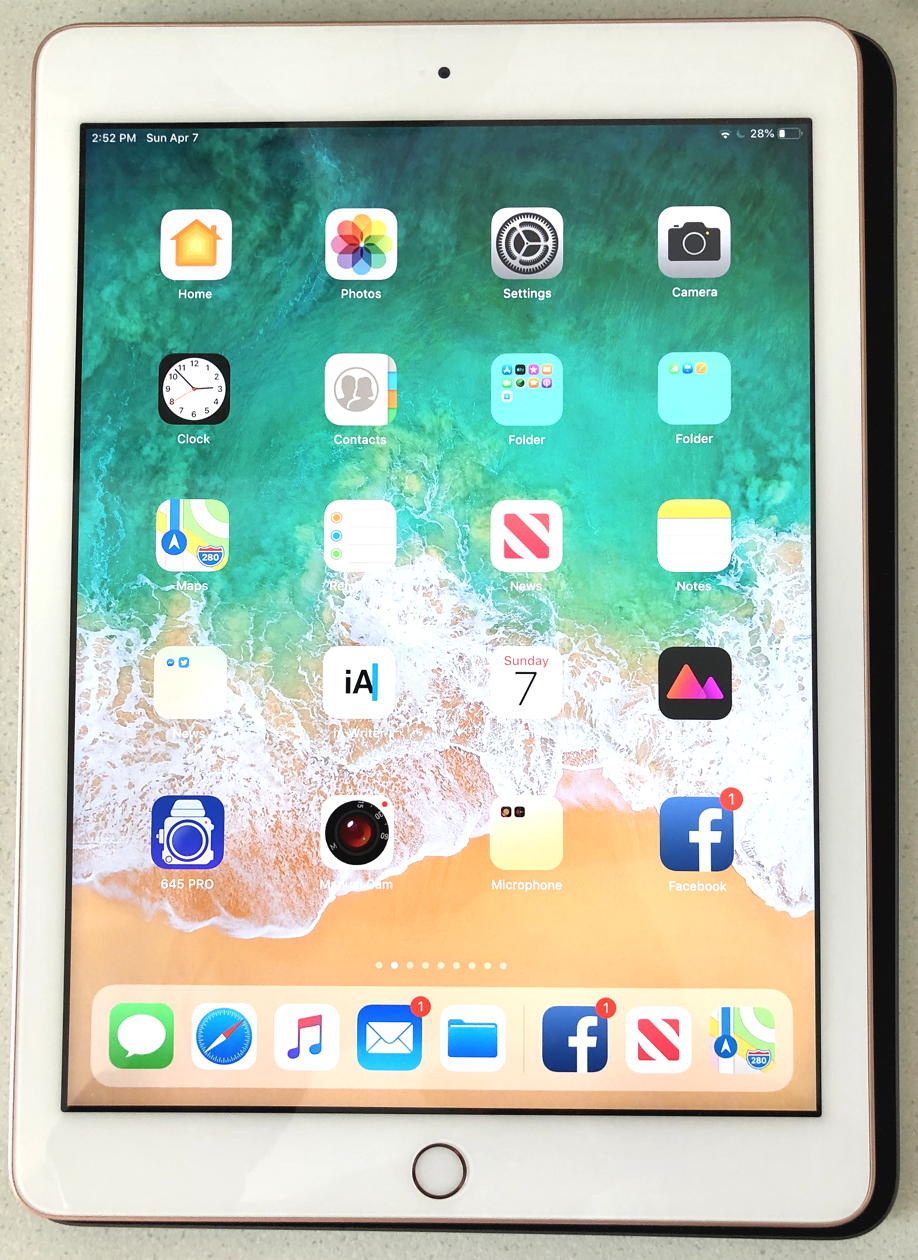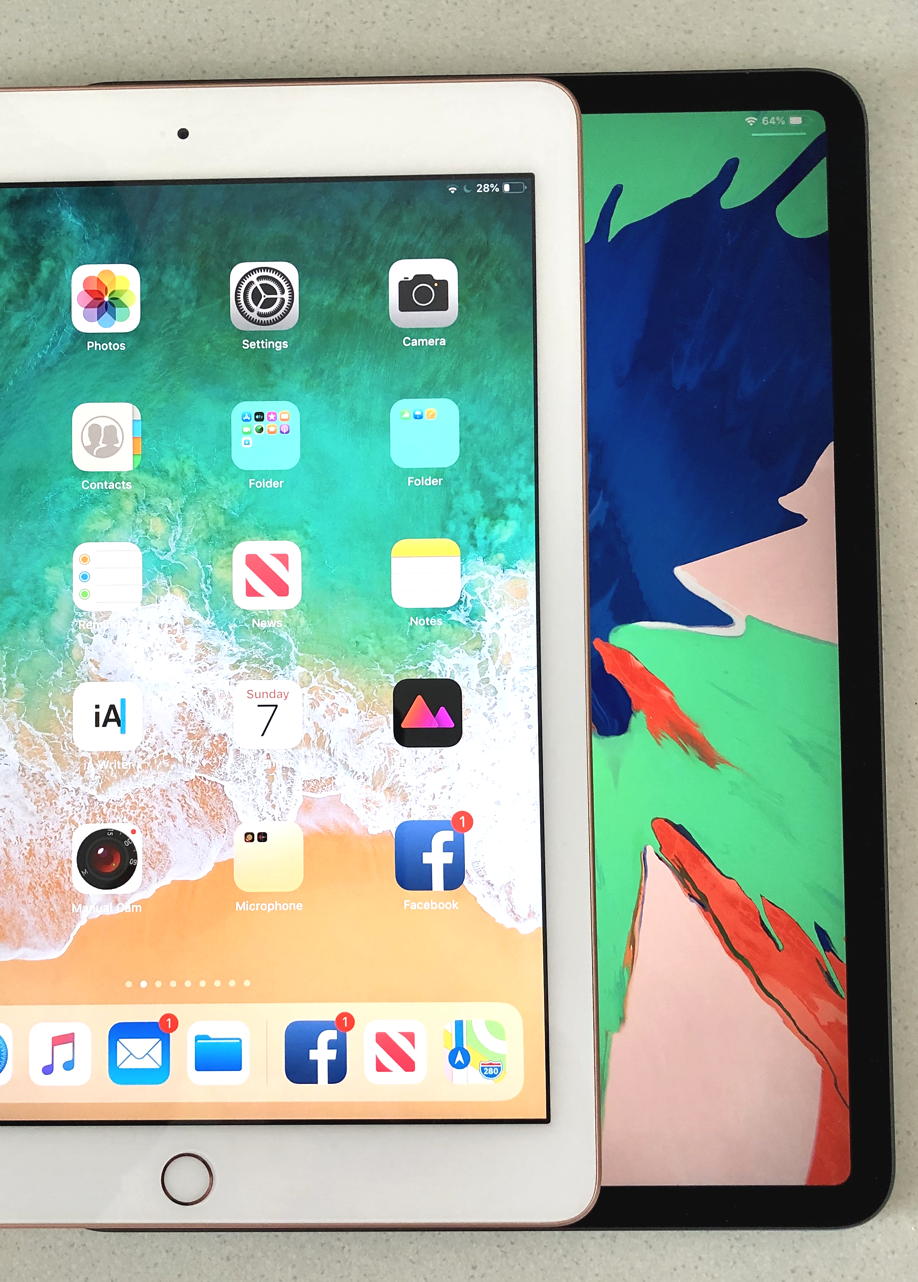|
|
Cassandra - 11" iPad Pro: Hands-on with Nikon D850By Graham K. Rogers
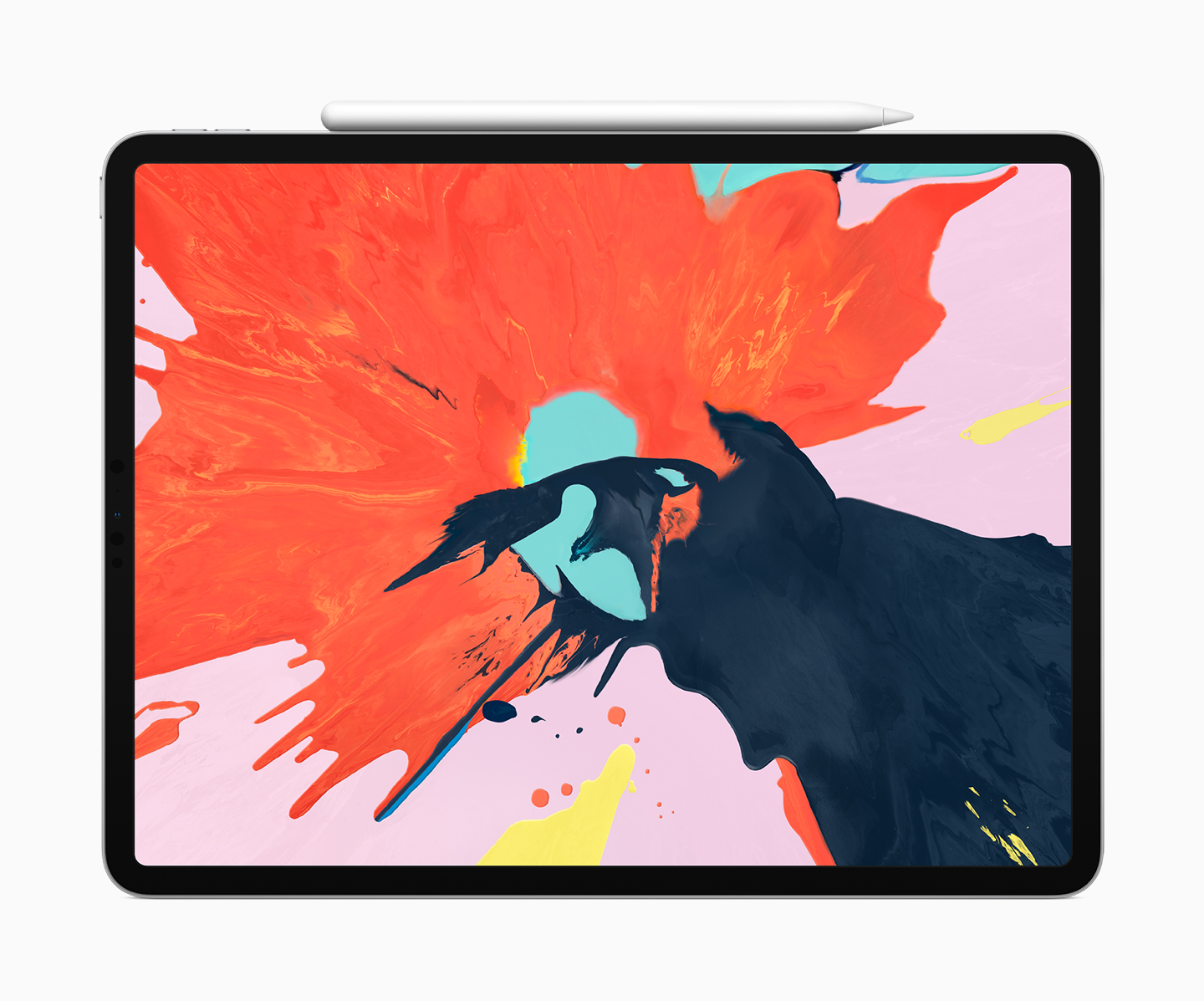
iPad Pro - Image courtesy of Apple
I do have an SD card adapter that I have used on several occasions on both iPhone and iPad, but although the images are transferred to the iOS devices fairly quickly, iCloud transfers are somewhat slow. The Mac is a little better, although when I came back from the UK last year, the upload of some 400 images or more took a few days before they were fully available on all my devices. The RAW files are around 95MB each so some delay is inevitable.
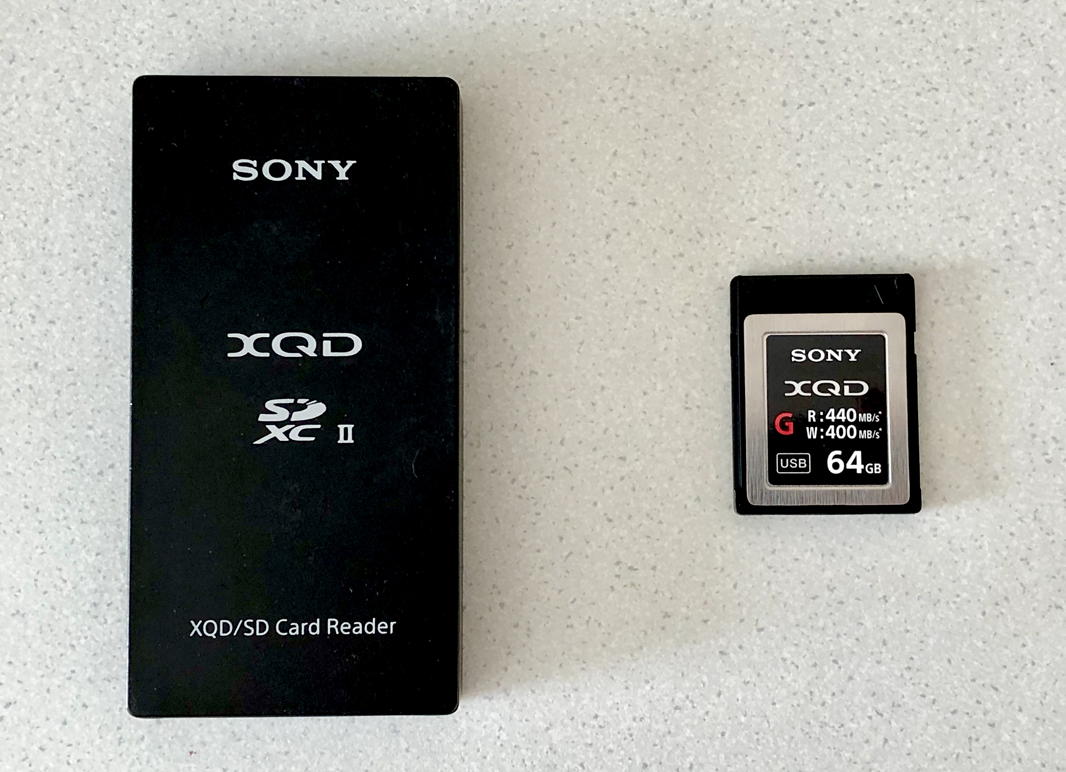
The Nikon Z-series Mirrorless cameras (which appeared a few months after the D850), as well as the most recent Hasselblad cameras, and others, have USB-C ports. The Nikon D850 has that horrible micro-USB connector, perhaps as a concession to legacy users. I now have micro-USB to USB-C cables. A pet peeve of mine is that, despite the number of devices and disks that still use micro-USB, there are no cables of this type in Bangkok stores, yet there are displays full of smartphone cases and other such items. I bought mine online: 2 from Amazon and later 2 more from Lazada. As a way to reduce reliance on adapters, I also bought a USB Type B to USB-C cable (again online) for the scanner.
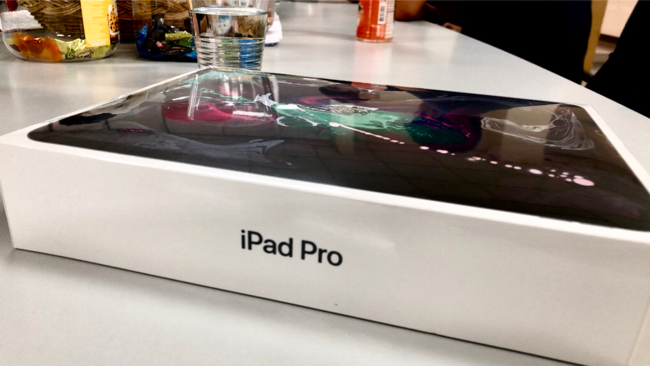
The apps downloaded quite quickly and I arranged them in a suitable way for my methods of working. Photos from iCloud began to download as well, although with 16,000 or more I expected that was going to take some time, but it was synchronized far quicker than I had expected. I noticed that while the iPad Pro was just a little larger than the sixth generation iPad I have been using, screen area is far more generous.
9.7" iPad and 11" iPad Pro
This confirms my early impression of Apple's information concerning the use of cameras with the iPad Pro. It makes the device quite flexible in terms of working with a camera on the street with far less weight than (say) my MacBook Pro. Synchronization of these 50 images to iCloud and my other devices was done in a reasonable time once I had WiFi access.
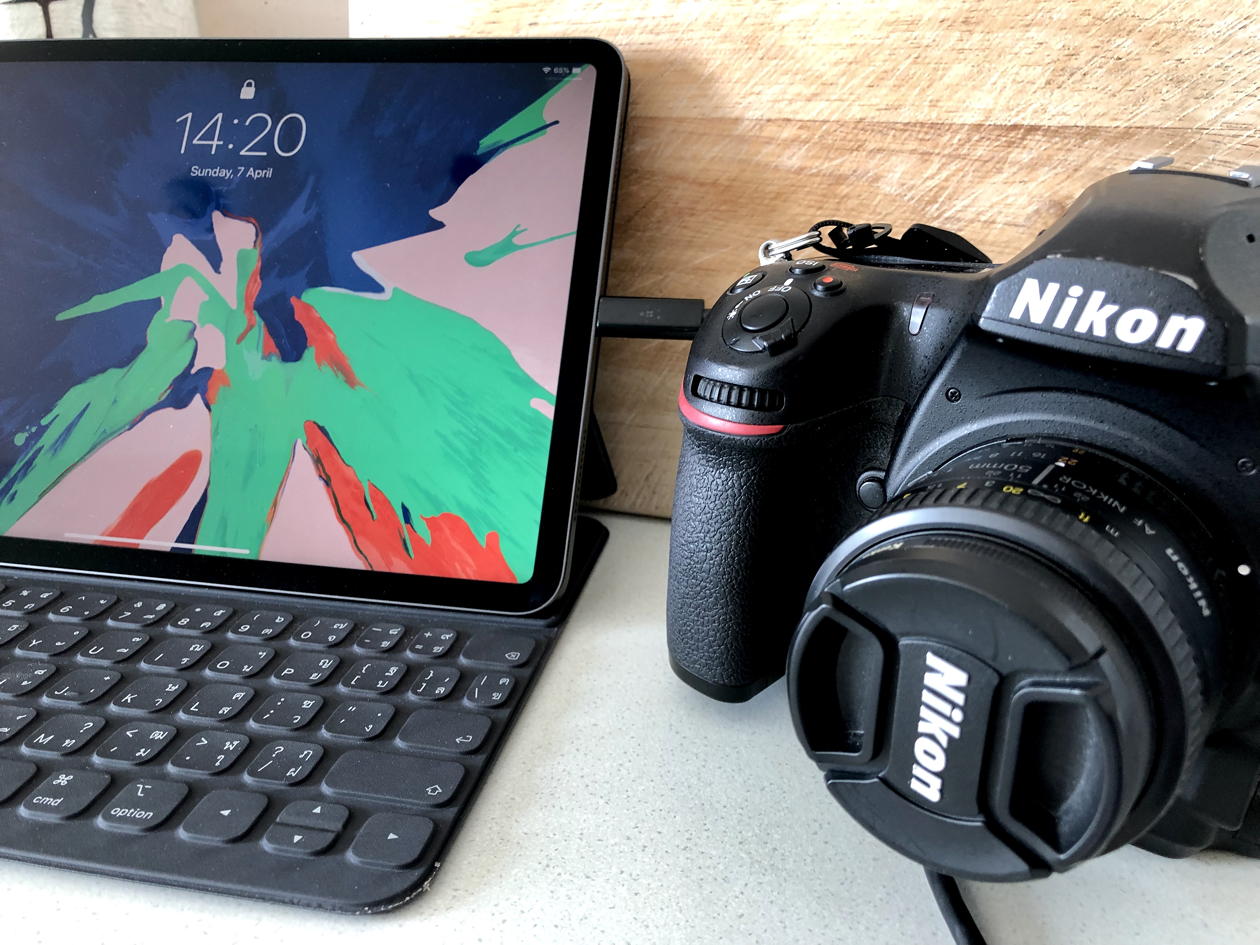 iPad Pro and Nikon D850 connected using micro USB to USB-C cable
There are several differences between working on the Mac and on the iPad, although the use of a keyboard does allow a number of similar keystrokes. Particularly with importing and editing images I have to recognize that the workflow is not the same. There are also a number of apps that I use on the Mac that just do not exist on iOS, partly due to restrictions that Apple imposes on data transfers. For example, I have yet to find an app that will write RSS feeds. I cannot use my flatbed scanner which works perfectly on the Mac via the VueScan application. There is a VueScan scanner app for iOS, but this only works for the types of scanner that are connected by WiFi. One particular Pro feature that is used by photographers is tethering: connecting a camera to a computer by cable and controlling it from the computer. I have a couple of such apps on the Mac (Sofortbild and Smart Shooter 3), but from what I have discovered online it is only possible to have some of this functionality via (again) WiFi control. That is not tethering and Apple falls short on this function if they intend the iPad Pro to be taken seriously as an alternative to a notebook or desktop computer. That lack of control is reflected through the limits on the ways users can access external storage. Other than wireless, the devices are restricted and it is impossible to connect a disk for transfer of files, limiting the ways they may be used. I accept that there may be sound security reasons for this restriction, but with Apple's resources and talent this should have been solved by now. I have tried a number of WiFi disks that are available and ended up giving them away. It must be cable.
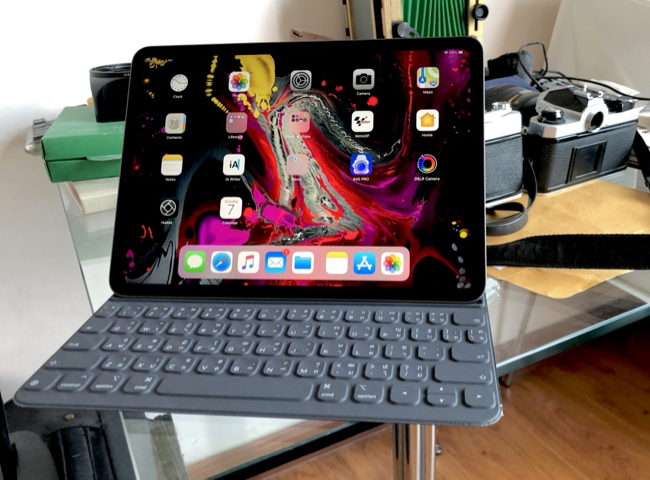 iPad Pro with Smart Keyboard
I tried the keyboard for the 11" iPad Pro in the store first and was easily convinced. I note that the three connectors are located differently compared to the original 12.9" device, but it was a simple operation to unpack the cover unit, connect to the iPad Pro and start working. I have been using iA Writer for a couple of years which is installed on all my iOS devices and all my Macs: content is synchronized using iCloud. For this article, I switched to Apple's Notes app and that had worked perfectly, with some input on 9.7" iPad, some on the MacBook Pro, some on the iPhone and also on the iPad Pro: I just pick up where I left off on each device. When I was ready, I copied the cotent into BBEdit and marked up the text for the WWW. I am still looking forward to more apps that will expand the capabilities of the iPad Pro (and other iOS devices) for use with photography and other functions. In the next day or so (9 April), Pixelmator Photo is to be released and this looks as if it could be a step in the right direction.
Graham K. Rogers teaches at the Faculty of Engineering, Mahidol University in Thailand. He wrote in the Bangkok Post, Database supplement on IT subjects. For the last seven years of Database he wrote a column on Apple and Macs. After 3 years writing a column in the Life supplement, he is now no longer associated with the Bangkok Post. He can be followed on Twitter (@extensions_th) |
|

